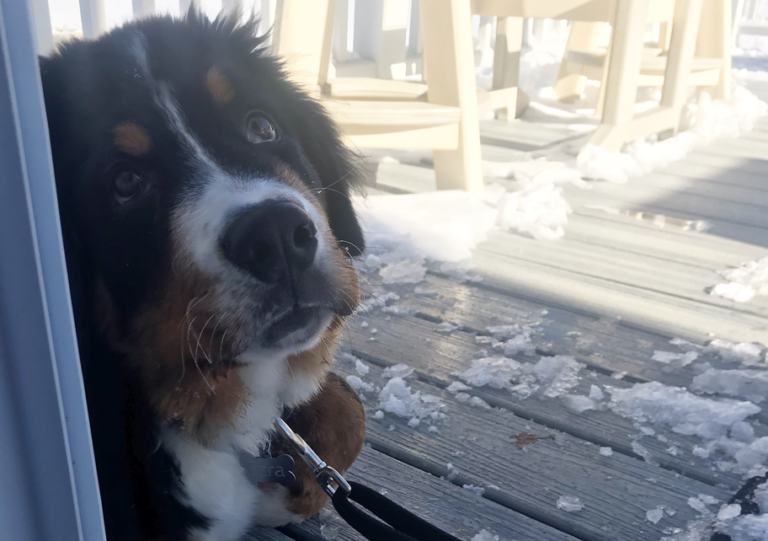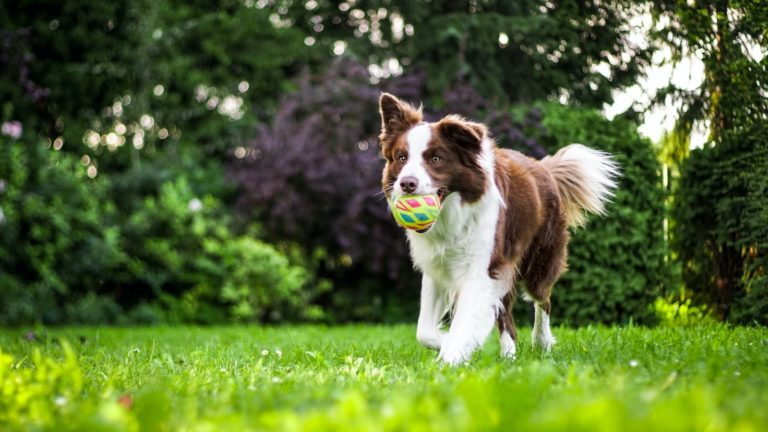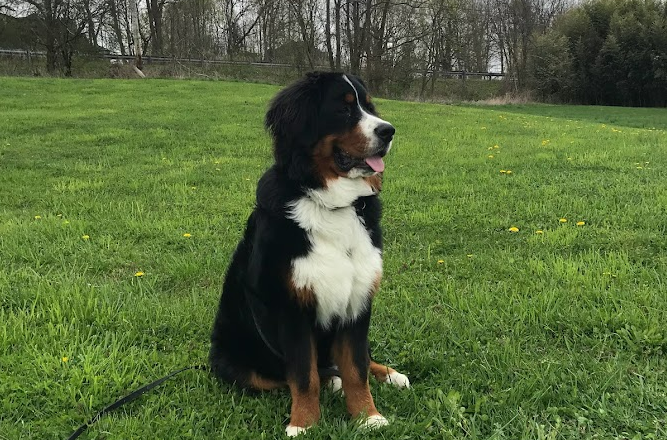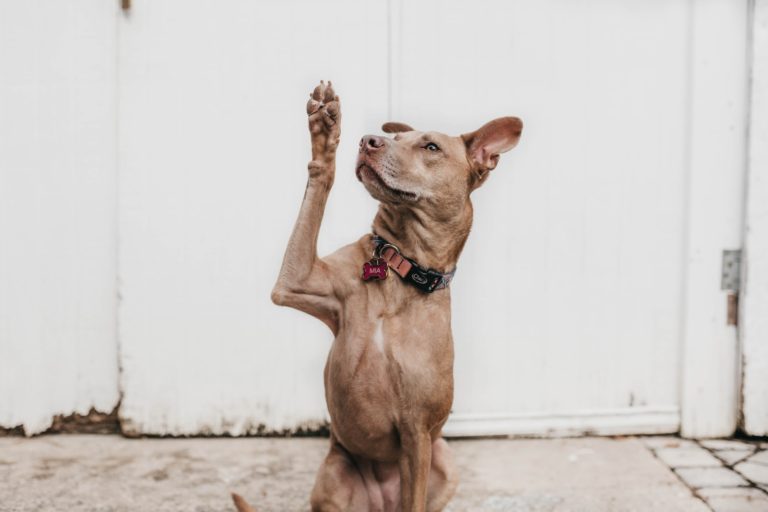7 Reasons Crate Training is GREAT for Your Dog
I love hearing stories of my parents or my friends parents growing up with dogs. Just 50 years ago, dog training and pet ownership was wildly different than it is today. Their dogs were generally outdoor dogs. They didn’t wear leashes. They didn’t sleep inside unless the weather was bad. And they certainly didn’t sleep in wire crates.
I think we can all agree that we made some great leaps forward in dog ownership in the last 50 years. I mean, dogs are practically family members now….that sleep in wire crates. But that’s a good thing! Crate training is positive – I explain why in more details below,
What is crate training?
Crate training is teaching your dog to be unafraid and familiar with being in their crate for long periods of time. They won’t try to escape going in there at all. They will use it as a place to sleep during the day or night, to hold some of their treasured toys, or for some alone time.
Why is crate training so hard?
Crate training is usually really hard because most people crate train when they first bring home their puppies. Their pup is already a little scared because he is in a new place. Then they get tossed into a crate to sleep at night, which usually leads to crying, barking, or howling. It may take a few days for your pup to stop being so loud at night, and it will keep you up. The noise is predominantly why crate training is hard. Once you get through that, it gets a little easier.
7 Key Reasons to Crate Train Your Pup
I really wanted Ezra to be properly crate trained because of all the benefits I saw from my last dog loving his crate. This section will cover the top reasons I think you should consider crate training your pup too.
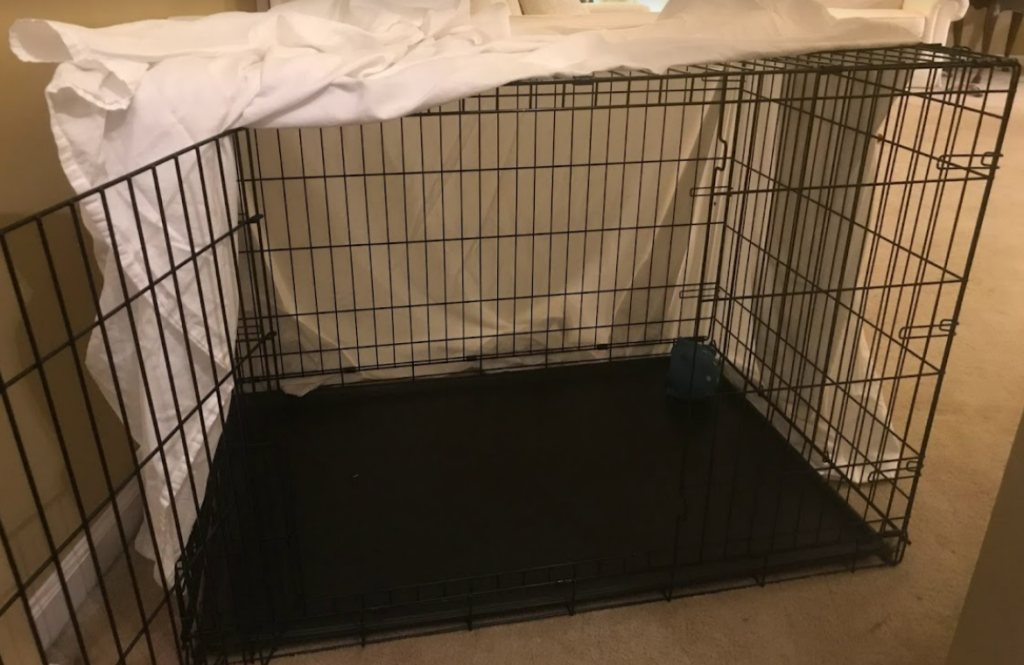
Reason 1: Helps with housebreaking
If used correctly, a crate can prevent accidents in your home. The best way to use your crate for house training is:
- Get a lot of your pup’s energy out by playing.
- After playing, take him outside to go to the bathroom.
- Then put him in the crate for a nap.
- When you are ready to take him out of the crate, go directly outside to potty.
In the beginning, you want to give enough space inside the crate so your puppy can turn around in a circle, but not so big that he can go to the bathroom inside. Many wire crates have an extra wire piece that you can put inside the crate to make it smaller than full size, and adjust it as your dog grows. You can also DIY this – I didn’t have the adjustable piece for my crate because it was cheaper to buy without. So I cut up wood and slid the pieces through the crate’s slots and moved around as needed. That kept him confined to a small space inside the crate.
Reason 2: Helps keep dogs out of trouble.
Puppies are busy bodies and they get into EVERYTHING and make messes everywhere, especially if not house-broken. Teething puppies can’t help themselves because their gums are so sore. They will to chew anything and everything to soothe and relieve their tender gums. If you can’t watch them constantly, they may destroy your belongings or have accident inside.
It is unreasonable to expect you to watch your puppy every waking moment of the day. When someone can’t watching your pup, you should put him in the crate. This will erase any worry and give you space to focus on other responsibilities or even your own self care without damaging your relationship or progress with your new charge.
Remember to ensure you are setting your pup up for a successful crate nap by getting energy out and pottying before going inside. Then potty again directly after taking him out of the crate.
Reason 3: Dogs like the comfort of a small, dark space.
Dogs are den animals. They actually like small, dimly lit spaces. Many adult dogs view small, dark spaces like their crate or under the kitchen table as safe spaces. My previous dog, George, would put himself in his crate when we had company and he wanted some alone time. Right before he died, he put himself in his crate as well because that was where he felt safe.
Your puppy probably won’t take to the crate immediately. He will cry, but it will be short-lived. To get your puppy used to the crate faster, I recommend putting a blanket over the crate so that it is dark inside and he can’t see what’s going on outside. I also recommend leaving him with some favorite toys or a long-lasting dog treat to stay occupied until he gets tired.
Reason 4: Prepares your dog for the groomer, vet, and boarding.
It’s almost inevitable that your dog will be crated at some point in his life. For example, he will likely be crated any time you aren’t waiting at the groomer to pick him up the moment he’s done with his appointment. Grooming appointments, vet visits, and leaving your dog at a kennel is traumatic enough for your dog. You don’t want him crated for the first time during these experiences, it’ll increase the trauma. It’s a good idea to prepare him for this by familiarizing him with a crate beforehand via crate training.
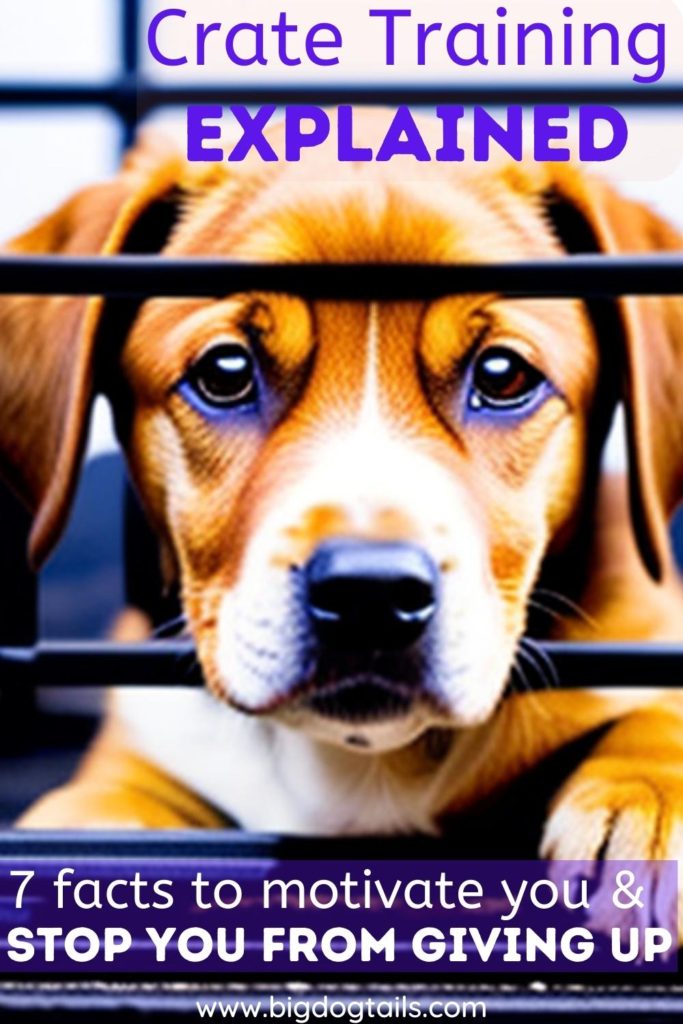
Reason 5: Keeps the dog safe in the car.
Keeping your dog in a crash-tested crate while you’re driving is the safest way to travel. Crash-safe crates are incredibly expensive, starting at around $250. They work by absorbing the impact of any car crashes and stay secure. They are essentially indestructible. If you are ever in a car accident that totals your car, you can guarantee your dog will survive in a crash tested kennel. In a wire crate? Sitting freely in the back seat? Probably not. Ensuring that your dog is comfortable in a crate for short or long drives is necessary for safe travel.
Though the wire crate will likely not guarantee your dog’s safety, it’s still a fantastic starting point to begin crate training. If you are interested in crash tested kennels to train in and use for safe car travel, check out Ruff Land or Gunner kennels.
Reason 6: Ensures safety during emergencies.
It’s always important to have an emergency plan in place to share with your family in case of any emergencies, like a house fire, intruder, etc. This should include your pets too. Crate training can be an important component to emergency situations, depending on where you live. If you live in an apartment or vacationing in a condo and there’s an emergency that requires an evacuation, your dog may not get evacuated unless he is either crated or muzzled. This even applies to small dogs.
The reason this may be a requirement is for the safety of the First Responders. Your dog may be the friendliest dog in the world, but even great dogs will bite if they are scared.
Reason 7: Helps increase engagement
An advanced skill for any dog to learn is to focus on you, regardless of what is going on around you two. Dogs get distracted by all kinds of things: leaves blowing in the wind, a butterfly, a jogger, etc. Sometimes taking Ezra for a walk is like trying to have a conversation with someone in Times Square. It can be really hard to communicate with him because he can’t focus on me with all the other really cool things around us to pay attention to.
It takes months to learn it, but you can begin training really early in puppyhood. There are many different ways to help increase engagement in puppyhood and beyond. Crate training is one component for effective engagement training. You can do this by leaving:
- Leave your dog in his crate alone for a couple hours, without any toys or favorite treats.
- Take him out of the crate and take him to the bathroom.
- Then PLAY! Play constantly for a couple hours until he’s tired.
- Then potty and right back in that crate.
Keep repeating that routine. He will be in his crate a bit, but you will be tiring him out each time and he’ll likely nap the hours away. Most importantly, he’s learning that all the fun is with you. He will learn that if he stays with you and looks at you, then good things will come to him.
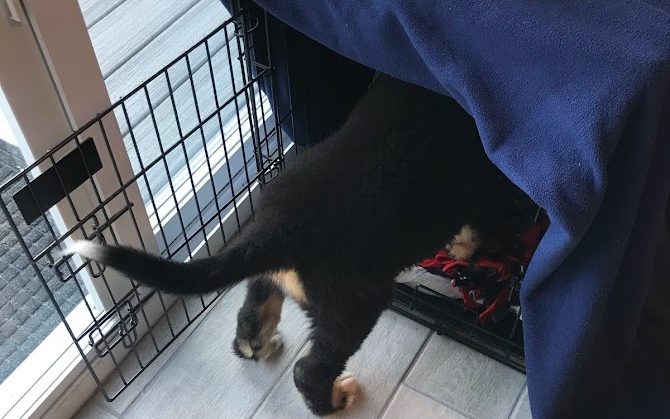
Conclusion
Crate training is so beneficial for your dog AND you. It’s great for you because it gives you alone time without worrying about the mischief your dog is up to. Your dog may resist in the beginning, but he will learn to love it too. It will become his safe space. Over time, he will kennel himself if he wants to be alone, which is great!
I hope this gave you motivation to keep up with crate training your puppy. If you are looking for more puppy training tips, dog mom lifestyle suggestions, or Puppy Blues help, I have you covered! Sign up for my email list for a few big secrets to help you prepare for bringing home a puppy immediately.


